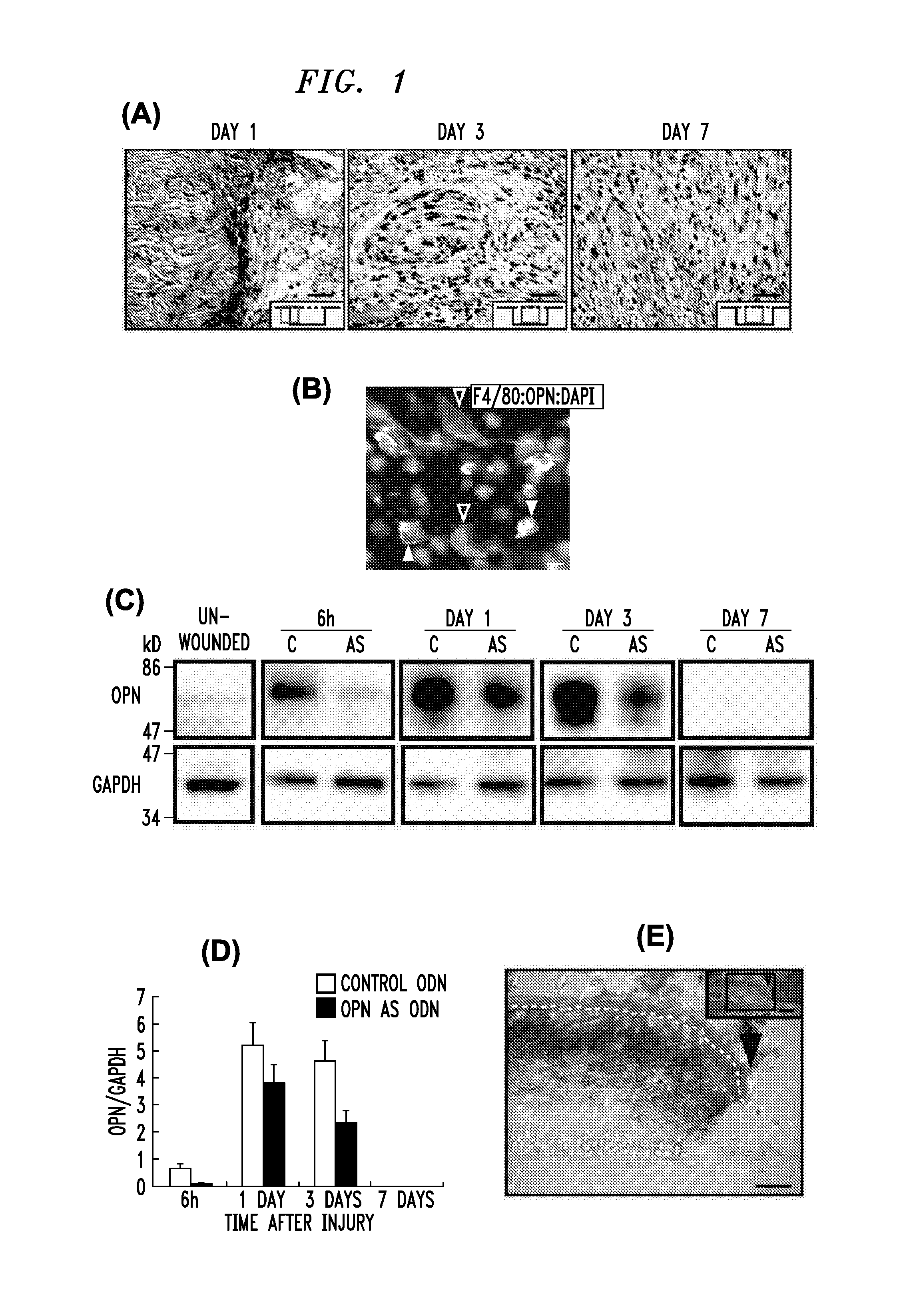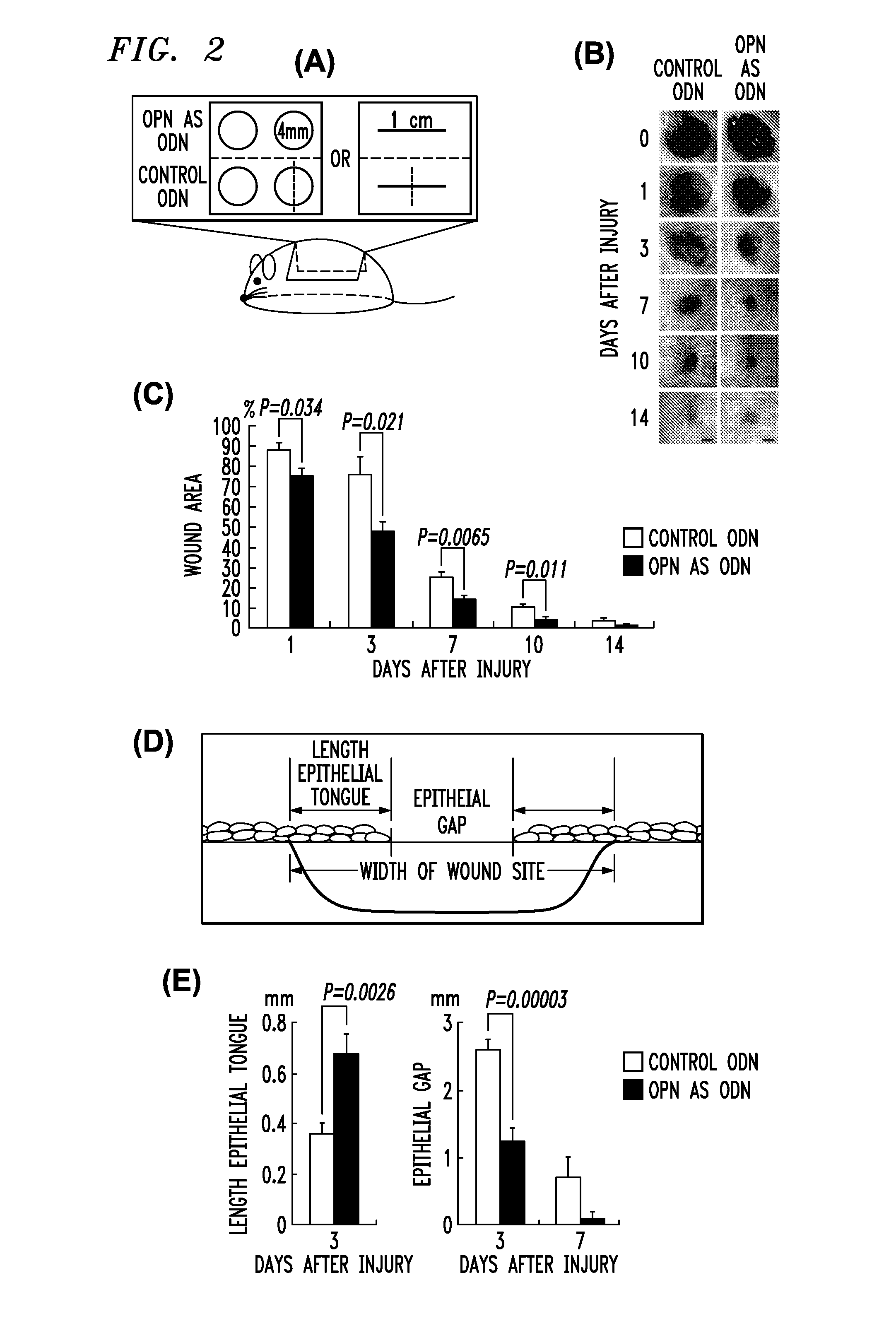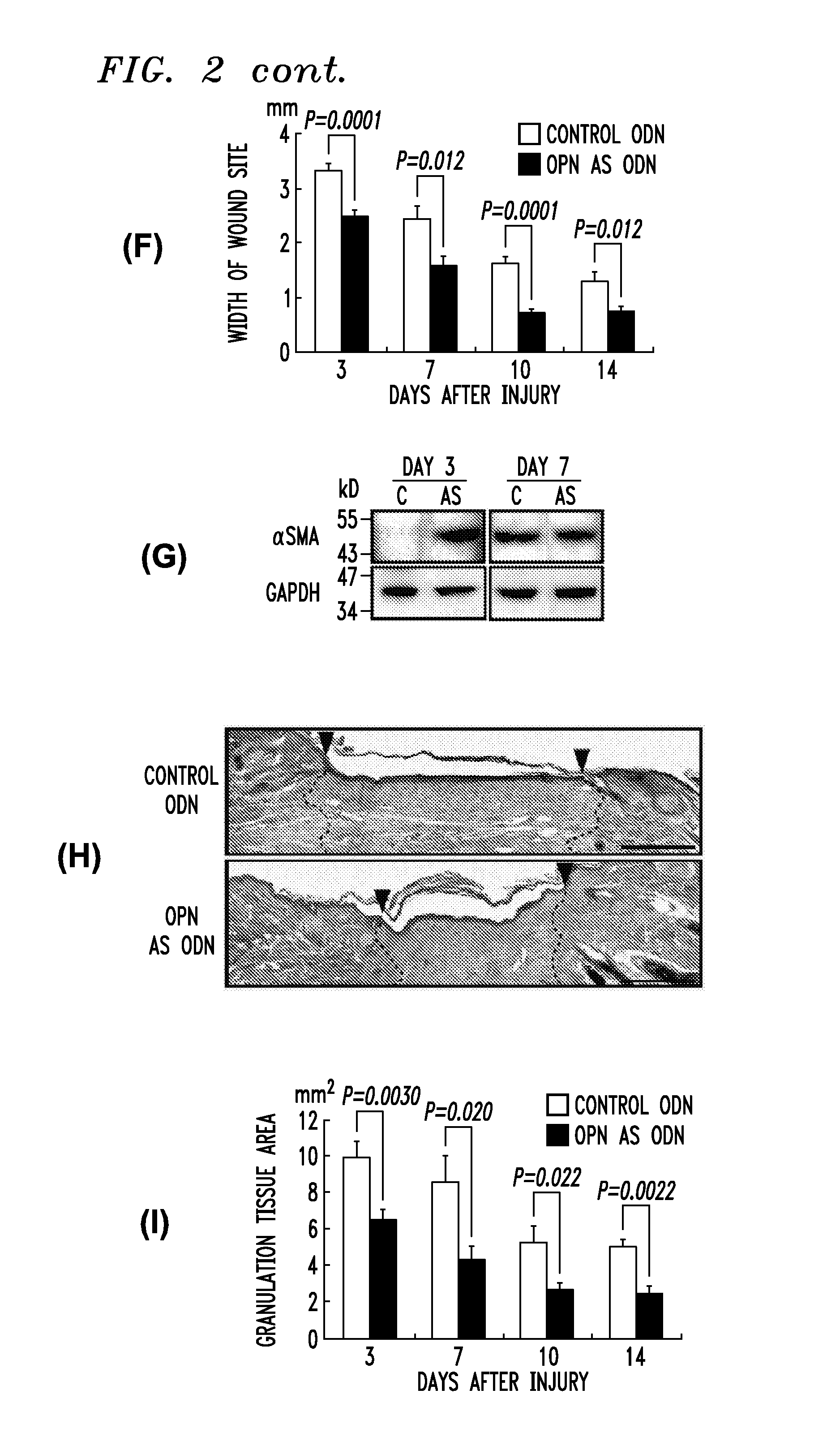Wound healing compositions and treatments
a technology for wounds and compositions, applied in the field of wounds and wound healing, can solve the problems of significant unmet need for suitable therapeutic options for wound care, and achieve the effects of promoting wound healing, reducing fibrosis, and improving and/or reducing scarring
- Summary
- Abstract
- Description
- Claims
- Application Information
AI Technical Summary
Benefits of technology
Problems solved by technology
Method used
Image
Examples
example 1
[0304]The following materials and methods were used throughout the examples described herein.
Wound Model and ODN Treatment
[0305]All experiments were conducted according to UK Home Office regulations. Mice (ICR age-matched males; 7-11 wks) were halothane-anaesthetized and 4 full-thickness excisional wounds (4 mm biopsy punch; Kai Industries) or two full-thickness incisional wounds of 1 cm were aseptically made to the shaved dorsal skin (FIG. 2 A). ODNs (control or OPN AS) were topically applied by pipette into the wound cavity immediately post-wounding [50 μl; 1, 2, or 5 μM in 30% Pluronic F-127 gel (see Supp. Materials and Methods); Sigma-Aldrich]. Wounds were recorded using a SteREO Lumar.V12 microscope (Carl Zeiss), and areas calculated using Openlab™ 4.0.2 (Improvision) software. Wound tissue was harvested with a 6 mm biopsy punch.
Sequences of Control and Antisense (AS) Oligodeoxynucleotides (ODNs).
[0306]
NameSequenceOPN control ODN (223)ctacgaccatgagattgOPN AS ODN (223)caatctcatg...
example 2
[0315]This example describes the design and optimization of candidates for AS ODNs.
[0316]Design of candidate for AS ODNs for knockdown studies: Deoxyribozymes (Dzs) were designed as previously described (Martin, P., and S. J. Leibovich (2005) Trends Cell Biol 15:599-607). Briefly, the target sense OPN mRNA sequence (GenBank; NM 009263) was scanned for AT and GT sites, and Dzs were then generated to include eight nucleotides on either side of the AT or GT, and a catalytic core of “ggctagctacaacga”. BLAST searches were conducted to exclude any sequences non-specific to OPN. Antisense deoxyribonucleotides (AS ODNs) were subsequently designed based on the sequences for binding arms of successful Dzs (FIG. 6). The thermo-stabilities of the chosen AS ODNs (i.e., hair-pin and homodimer formation) were tested by OligoWalk (2). Sequence for Dzs-small letters represent the binding arm and capital letters indicate the catalytic core site (GGCTAGCTACAACGA):
NameSequenceOPN Dz (223)caatctca GGCTA...
example 3
[0322]This example demonstrates the effects of down-regulating osteopontin (“OPN”) expression on wound healing, fibrosis, and scarring. Antisense oligodeoxynucleotides (“AS ODNs”) or a corresponding scrambled-sequence control ODN as set forth in the table above, were applied to in vivo 4 mm punch biopsy wounds on the backs of adult mice, at a concentration of 1 μM in 30% Pluronic gel. Typically, OPN is expressed in the wound granulation tissue by 6 hr post-wounding, with levels peaking at 3 days, and then diminishing to pre-wound levels by 7 days (FIG. 1A).
[0323]Immunofluorescence studies with antibodies against OPN and the macrophage-specific marker F4 / 80 indicate that whilst some wound macrophages express OPN at a low level, the majority of OPN positive cells are F4180 negative and thus mesenchymally derived and most likely are fibroblasts, although some may be pericytes (FIG. 1B). Western blot analyses of wound tissues indicate that the AS knock-down reproducibly reduced OPN leve...
PUM
| Property | Measurement | Unit |
|---|---|---|
| Fraction | aaaaa | aaaaa |
| Fraction | aaaaa | aaaaa |
| Time | aaaaa | aaaaa |
Abstract
Description
Claims
Application Information
 Login to View More
Login to View More - R&D
- Intellectual Property
- Life Sciences
- Materials
- Tech Scout
- Unparalleled Data Quality
- Higher Quality Content
- 60% Fewer Hallucinations
Browse by: Latest US Patents, China's latest patents, Technical Efficacy Thesaurus, Application Domain, Technology Topic, Popular Technical Reports.
© 2025 PatSnap. All rights reserved.Legal|Privacy policy|Modern Slavery Act Transparency Statement|Sitemap|About US| Contact US: help@patsnap.com



